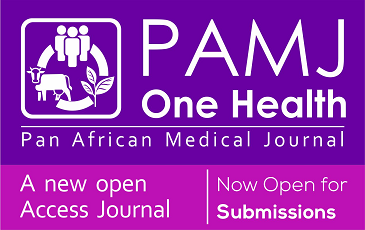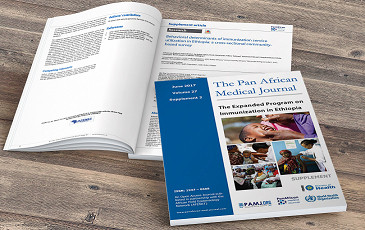Faux anévrisme axillaire post-traumatique
Zakaria Zoheir Addou, Djamila-Djahida Batouche
Corresponding author: Zakaria Zoheir Addou, Service de Réanimation Pédiatrique et Néonatal, Établissement Hospitalier Universitaire 1er Novembre 1954, Faculté de Médecine, Université Oran 1, Oran, Algérie 
Received: 17 Dec 2024 - Accepted: 04 Jan 2025 - Published: 15 Jan 2025
Domain: Health emergencies,Vascular surgery
Keywords: Faux anévrysme, traumatisme, enfant
©Zakaria Zoheir Addou et al. PAMJ Clinical Medicine (ISSN: 2707-2797). This is an Open Access article distributed under the terms of the Creative Commons Attribution International 4.0 License (https://creativecommons.org/licenses/by/4.0/), which permits unrestricted use, distribution, and reproduction in any medium, provided the original work is properly cited.
Cite this article: Zakaria Zoheir Addou et al. Faux anévrisme axillaire post-traumatique. PAMJ Clinical Medicine. 2025;17:4. [doi: 10.11604/pamj-cm.2025.17.4.46253]
Available online at: https://www.clinical-medicine.panafrican-med-journal.com//content/article/17/4/full
Faux anévrisme axillaire post-traumatique
Post-traumatic axillary pseudoaneurysm
&Auteur correspondant
A.A., a 10-year-old child with no medical history, fell while holding onto the back of his father's truck, hitting lateral hooks during the vehicle's start. This fall caused a wound in the left axillary region with external bleeding. The father applied compression to the bleeding and took the child to the hospital. Upon admission, the child was conscious, with paleness of the skin and mucous membranes, along with functional impairment of the left upper limb. Clinical examination revealed a linear, ecchymotic wound in the axilla. Additional tests showed anemia and a fracture of the left scapula. Investigation of the axillary wound did not reveal any vascular, nerve, or tendon injuries. Four days after the accident, due to persistent intense arm pain and progressive swelling of the axillary region (A), several diagnoses were considered, including pseudoaneurysm, hematoma, or infectious collection. CT angiography of the left upper limb revealed a posterior axillary pseudoaneurysm measuring 28 x 28 mm (B), surrounded by a hematoma measuring 64 x 62 mm (C). The child was admitted to the operating room for axillo-axillary vascular interposition. The procedure involved evacuation of the hematoma (D), resection of the bleeding posterior artery, and axillo-axillary interposition using a saphenous vein graft (E,F). Postoperatively, the limb became warm, with a palpable radial pulse and resolution of pain.
Key words: Pseudoaneurysm, traumatic, child
L'enfant A.A, âgé de 10 ans, sans antécédents, étant accroché à l'arrière du camion de son père, a chuté sur des crochés latéraux lors du démarrage de ce dernier. Cette chute lui a occasionnée une plaie au niveau axillaire gauche avec un saignement extériorisé. Le père a réalisé une compression du saignement et a emmené son fils à l'hôpital. A son admission, l'enfant était conscient avec une pâleur cutanéomuqueuse et une impotence fonctionnelle du membre supérieur gauche. L'examen clinique a retrouvé une plaie linéaire et ecchymotique du creux axillaire. Les examens complémentaires ont objectivé une anémie et une fracture de l'omoplate gauche. L'exploration de la plaie axillaire n'a pas objectivé de lésions vasculo-nerveuses ou tendineuses. Quatre jours après l'accident, devant la persistance d'une douleur intense au niveau du bras et l'augmentation progressive du volume de la région axillaire (A), plusieurs diagnostiques ont été évoqués parmi lesquels, un faux anévrisme, un hématome ou une collection infectieuse. Un angioscanner du membre supérieur gauche a objectivé la formation d'un faux anévrysme axillaire postérieur mesurant 28 x 28 mm (B) entouré d'un hématome mesurant de 64 x 62 mm (C). L'enfant a été admis au bloc opératoire pour la réalisation d'une interposition vasculaire axillo-axillaire. L'intervention a consisté à l'évacuation de l'hématome (D), une section de l'artère postérieur qui saignait avec interposition axillo-axillaire par implantation de la veine saphène (E,F). En post opératoire, le membre est devenu chaud avec un pouls radial bien perçus et disparition de la douleur.
Figure 1: A) volumineux hématome ecchymotique de la région axillaire; B) faux anévrysme postérieur d'une branche collatérale de l'artère axillaire mesurant 28x28 mm; C) hématome de 64x62 mm de mensuration entourant le faux anévrysme axillaire; D) évacuation de l'hématome axillaire; E) section de la veine axillaire et réalisation de l'interposition axillo-axillaire par la veine saphène; F) interposition axillo-axillaire
Search
This article authors
On Pubmed
On Google Scholar
Citation [Download]
Navigate this article
Similar articles in
Key words
Tables and figures
 Figure 1: A) volumineux hématome ecchymotique de la région axillaire; B) faux anévrysme postérieur d'une branche collatérale de l'artère axillaire mesurant 28 x 28 mm; C) hématome de 64 x 62 mm de mensuration entourant le faux anévrysme axillaire; D) évacuation de l'hématome axillaire; E) section de la veine axillaire et réalisation de l'interposition axillo-axillaire par la veine saphène; F) interposition axillo-axillaire
Figure 1: A) volumineux hématome ecchymotique de la région axillaire; B) faux anévrysme postérieur d'une branche collatérale de l'artère axillaire mesurant 28 x 28 mm; C) hématome de 64 x 62 mm de mensuration entourant le faux anévrysme axillaire; D) évacuation de l'hématome axillaire; E) section de la veine axillaire et réalisation de l'interposition axillo-axillaire par la veine saphène; F) interposition axillo-axillaire










